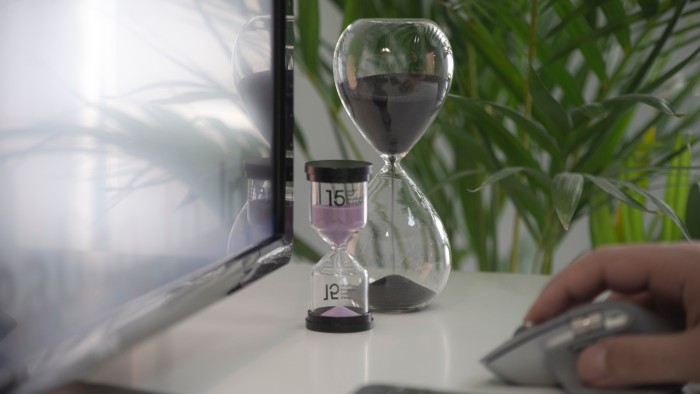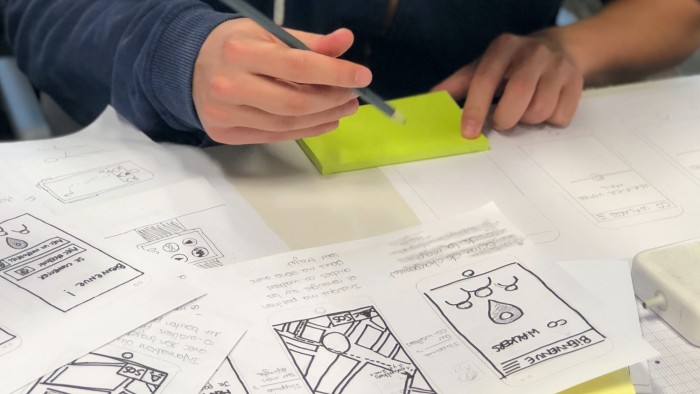Choosing between product and project to achieve your goals
In the digital world, the terms "product" and "project" are often used, sometimes interchangeably, but they represent very different concepts. Understanding these differences is crucial, as it influences how initiatives are planned, executed, and managed.

Understanding the distinction between a product approach and a project approach is more than a matter of terminology; it's about vision, strategy, and sustainability. At Atipik, we've strategically chosen to firmly position ourselves in the product camp, but why this choice and, more importantly, what differences does it make for our clients? This article aims to untangle these concepts to help you identify your own inclination and understand the impact of this orientation on your digital initiatives.
Defining a Product and a Project
What is a Digital Product?
A digital product refers to a solution or a set of features developed to meet the needs of a user or market, with a longevity perspective and continuous evolution in mind. A digital product does not have a defined end; it is constantly improved, updated, and adapted to the changing needs of users and technological advancements. Digital products include mobile apps, online platforms, business software, and embedded systems.
What is a Digital Project?
In contrast, a project is defined as a set of temporary activities coordinated to achieve a specific goal within a defined timeframe. Digital projects may cover the development of a website, the implementation of an information system, the redesign of a user interface, or the integration of systems to enhance customer experience. It usually involves a more stringent series of stages, such as planning, design, development, and deployment, and concludes once the objectives are met and the product or service is delivered and operational.
The Key Differences Between Product and Project
| Product | Project | |
|---|---|---|
| Duration & Evolution | Designed to exist and evolve over the long term. | Has a determined duration with a clear beginning and end. |
| Objective | Focuses on continuously meeting user needs and adapting to market changes. | Aims to achieve a specific goal (e.g., launching a new website). |
| Management | Product management concentrates on continuous improvement, product strategy, and user engagement. | Project management revolves around deadlines, budgets, and specific deliverables. |
| Success Measurement | Success is assessed based on user adoption, customer satisfaction, and commercial performance. | Success is often measured by the ability to deliver within allocated timeframes and budgets. |
| Role & Skills | A permanent internal team, multidisciplinary, focused on innovation and continuous improvement. | A temporary group formed to plan, execute, and complete a specific project. |
Projects Have an End, Products Are Made to Evolve
The temporary nature of projects means they have clearly defined starts and ends. Once a project is completed, the team dissolves or moves on to other projects. In contrast, a digital product is designed for longevity and continuous evolution. Even after its launch, a product remains under the care of a dedicated team that adapts and improves it based on user feedback and technological advancements.
In project mode, maintenance and evolutions might occur but are often managed by different teams, unlike in product mode where the core team remains involved.
Projects are Client-Oriented, Products are User-Centered
Digital projects are often undertaken in response to the specific needs of a client or a company, with a clear objective and defined expectations. This means the success of a project is measured by its ability to meet these needs within the allocated timeframes and budgets. In contrast, digital products focus on the satisfaction and engagement of end-users. The goal is to create lasting value and meet the evolving needs of users, which can sometimes exceed the initial expectations of the client.
Project Management is Guided by Specifications, Product Management Evolves the Product
Traditional project management relies heavily on adhering to specifications, which define deliverables, timelines, and budgets. This approach leads to a primarily transactional interaction between the client and the provider, where the project's directives and expectations are largely dictated by the client.
On the other hand, product management adopts a long-term development perspective, focusing on innovation and adaptation to market and technological changes. More than mere execution, this management forms part of a close and lasting collaboration, where the development studio also takes on the role of strategic advisor. By bringing expertise to guide decisions, stimulate innovation, and anticipate future trends, the studio turns the work dynamic into a rich co-creation process.
How to Choose Between Product & Project?
Choosing between a product or project approach depends on your goals, your audience, and the nature of your digital initiative. Here's how to guide your choice:
- Long-term objectives: Are you aiming for a durable solution that evolves over time (product) or a response to an immediate need (project)?
- Audience: Are you looking to meet the specific requirements of a client and/or user, or to address the needs of a broader market?
- Nature of the initiative: Is it a one-time effort with a precise outcome or a long-term commitment requiring continuous evolution?
- Available resources: Are your budget and internal skills better suited to a limited project framework or do they require a more flexible investment for a product?
- Success measurement: Is success defined by on-time delivery and budget compliance (project) or by growth and adaptation to user needs (product)?
Your choice will reflect your strategic vision and influence the planning and execution of your digital initiatives. Atipik is ready to guide you in this reflection to ensure your decision supports your long-term ambitions.
Distinguishing between a product approach and a project approach is not just a matter of semantics but a strategic decision that can define the success and sustainability of your initiatives. At Atipik, we favor a product orientation because we believe in creating digital solutions that not only meet users' current needs but are also designed to adapt and evolve over time.
Choosing a product approach commits you to a path of continuous improvement, regular updates, and adjustment to technological trends, which is essential in a world where user expectations and market dynamics change rapidly.
Maxime
Head of Business Dev.


